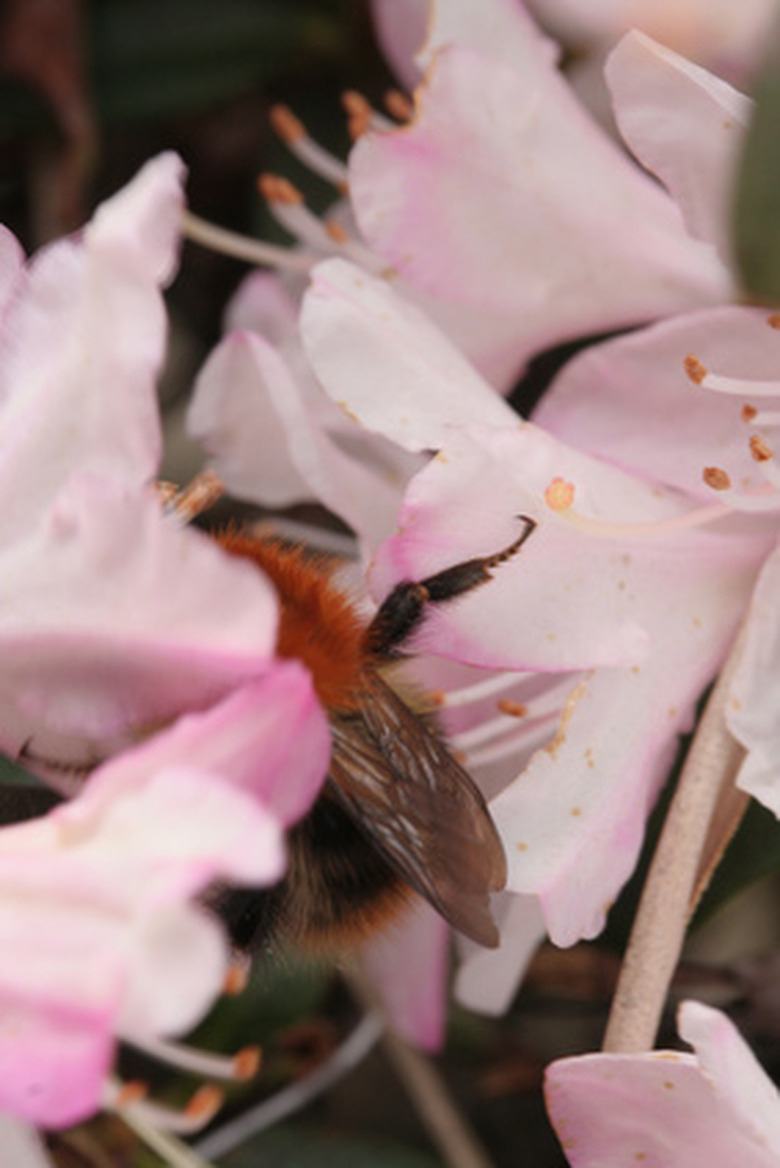How To Grow Azaleas In Pots
Things Needed
- Potted azalea
- 5-gallon pot
- Gravel
- Azalea potting soil
- Water
- Fertilizer
- Pruning shears
Homeowners often grow azaleas as potted houseplants. The lush, glossy leaves of the plant combined with its brightly colored blossoms help brighten any indoor landscape. Provide your container-grown azalea with the care and maintenance it needs to maintain and encourage healthy foliage production and blossom growth for a healthy and vigorous indoor shrub.
Step 1
Repot the azalea. Most pot-grown azaleas are sold in 6-inch pots, according to the University of Minnesota. Transplanting the plant into a bigger pot ensures vigorous and sustained azalea growth. Select a pot, choosing one that holds a minimum of 5 gallons–the bigger, the better–and has drainage holes on the bottom. Pour 1 inch of gravel into the bottom of the pot.
- Homeowners often grow azaleas as potted houseplants.
- Transplanting the plant into a bigger pot ensures vigorous and sustained azalea growth.
Step 2
Fill the pot with potting soil labeled for use with azaleas, as the plants thrive best in acidic soil. If your garden store or nursery doesn't sell azalea-specific potting soil, North Dakota State University suggests that you mix your own by combining one part sphagnum peat moss with two parts standard potting soil.
Step 3
Dig a hole in the pot that's the size of the azalea's existing pot. Slide the plant out of the first pot, including the surrounding soil, and place it in the new pot. Fill in the sides of the hole with potting soil.
Step 4
Place the pot in a room with a consistent temperature of approximately 60 degrees Fahrenheit, according to the University of Missouri. Keep it in a well-lit area that's out of direct sunlight during the plant's blooming period, then move it into direct sunlight when it's not in bloom. The university says direct sunlight will fade the azalea blossoms.
- Fill the pot with potting soil labeled for use with azaleas, as the plants thrive best in acidic soil.
- If your garden store or nursery doesn't sell azalea-specific potting soil, North Dakota State University suggests that you mix your own by combining one part sphagnum peat moss with two parts standard potting soil.
Step 5
Water the azalea plants once a day or whenever the top inch of soil feels dry, according to the University of Minnesota. Use enough water so that moisture appears in the pot's bottom drainage holes.
Step 6
Trim off the azalea blossoms as soon as they wilt. The University of Missouri says this encourages continuous blossom production and also helps prevent blossom-related diseases.
Step 7
Fertilize the potted azalea during its spring, summer and fall growing season. Mix 1/2 teaspoon of ammonium sulphate and iron sulphate in a quart of water, and use the solution to water the azaleas every two weeks. Use a standard houseplant fertilizer instead of the homemade solution during every third fertilization.
- Water the azalea plants once a day or whenever the top inch of soil feels dry, according to the University of Minnesota.
- Use a standard houseplant fertilizer instead of the homemade solution during every third fertilization.
Tip
When buying your first potted azalea, choose a plant that has green leaves with no yellow or wilted foliage. Inspect it carefully for insect pests, as you don't want to introduce bugs into your home.
References
- "Success With Rhododendrons and Azaleas"; H. Edward Reiley; 2004
- University of Missouri: Care of Flowering Potted Plants
- Texas A&M University: Houseplants
- North Dakota State University: Questions on Azaleas
